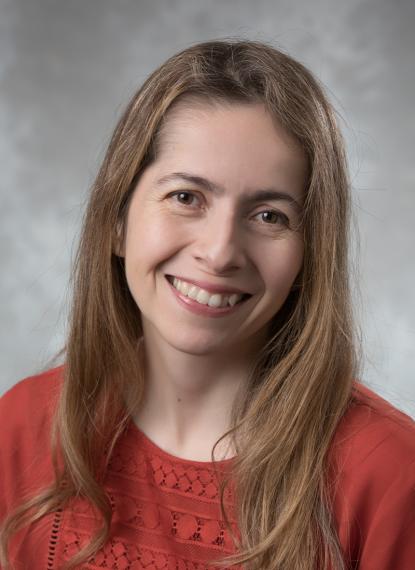Liliana Caballero

Find Related People by Keyword
Education and Employment Background
Professor Liliana Caballero received her BSc at the Universidad Nacional de Colombia in Bogota, and her MSc and PhD at Indiana University. She went on to work as a postdoctoral researcher at North Carolina State University, the Institute for Nuclear Theory (University of Washington), the ExtreMe Matter Institute at the Technical University of Darmstadt, the National Superconducting Cyclotron Laboratory (Michigan State University), and held joint positions with TRIUMF, the Perimeter Institute for Theoretical Physics and the University of Guelph. Prof. Caballero joined the University of Guelph as an Assistant Professor in 2016.
Research Themes
Professor Caballero’s research centers around theoretical nuclear astrophysics. She explores the connection between nuclear forces and several phenomena observed in the Universe, including the synthesis of heavy elements, the neutrino emission in core-collapse supernova and neutron star mergers, and bursts in accreting neutron stars. Her research aims to expand our understanding of the interplay between neutrinos, nuclear interactions, and gravity in astrophysics. She explores astrophysical phenomena that occur under extreme temperature and density conditions—running an extraterrestrial laboratory where she tests theories of the interaction between neutrons and protons. Key research themes include:
- Neutrinos. Neutrinos play an important role in the evolution of supernovae, neutron star mergers, and accretion disks around black holes. Understanding the connection between neutrinos and compact objects helps to shed light on gravitational wave signals and the production of heavy elements such gold.
- Neutron stars. The structure of nuclear matter in a neutron star depends on the not fully understood character of the nuclear force. Observation of neutron stars and their mergers would unveil the properties of nuclear interactions. Neutron-star mergers are proposed as progenitors of short gamma-ray bursts, are thought to be a site for the synthesis of heavy elements, and they emit gravitational waves that might be detectable at terrestrial facilities. Prof. Caballero seeks to understand the structure of neutron stars and merger process from the pre-merger stage to the final compact object-accreting system.
- Nucleosynthesis. The understanding on the synthesis of heavy elements relies on our knowledge of nuclear reactions occurring in the interior of neutron-star mergers and supernovae. Prof. Caballero is interested in the role of weak reactions, gravity, and thermodynamic properties of stellar on the synthesis of elements.
Highlights
- NSERC Discovery Grant, 2020-2025
- NSERC Discovery Grant, 2016-2020
- CFI/ORF Infrastructure Grant 2020-
- Nuclear Science Day organizer, 2016, 2018
- TEDx GuelphU, "Eccentric Stars,” 2016
- Doctoral Training Program Fellowship, European Center for Theoretical Studies in Nuclear Physics and Related Areas, “Physics of Compact Stars”, Trento, Italy, 2007
Media Coverage
Women in STEM
- University of Guelph, GenEq, Stars and what matters
- Canadian Science Policy Centre: Wonders of a Woman in Physics
Grants & Awards
- University of Guelph, News, CFI Awards Nearly $1 MIllion to U of G Researchers
- Department of Physics News: Professor Liliana Caballero is one of 2017's Neutrino Question Winners - Neutrino Physics Center at Fermilab
Space
- CEPS Research Highlight, Space - The Origins of Gold
- TEDx Guelph U: What Turns Me On? Eccentric Stars!